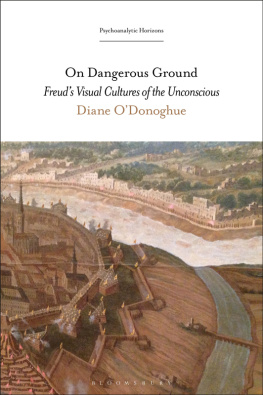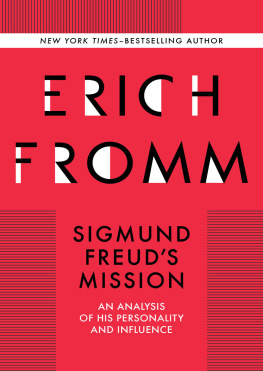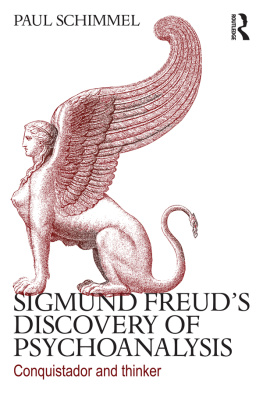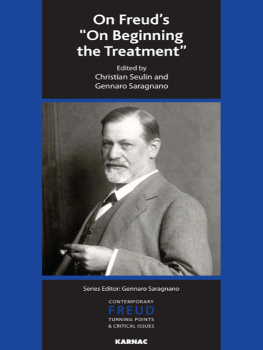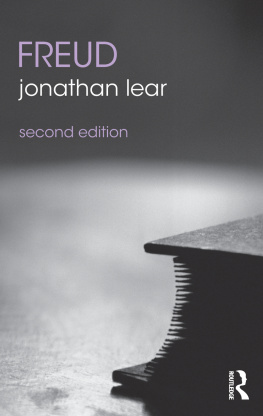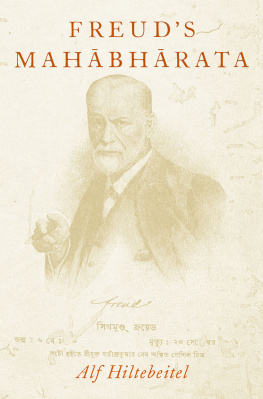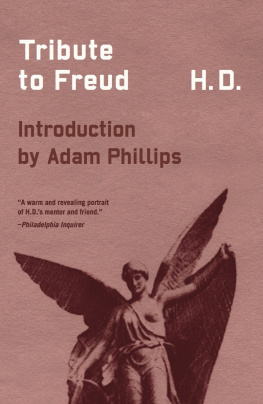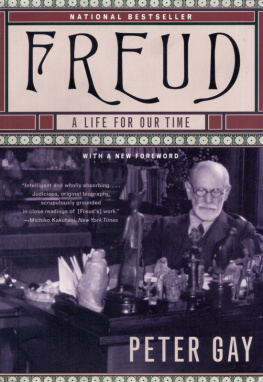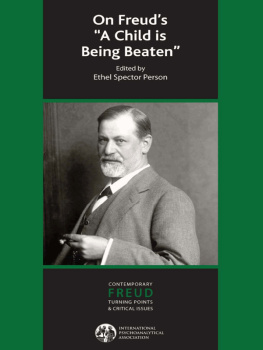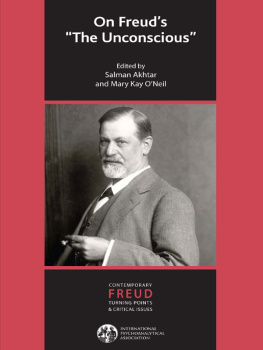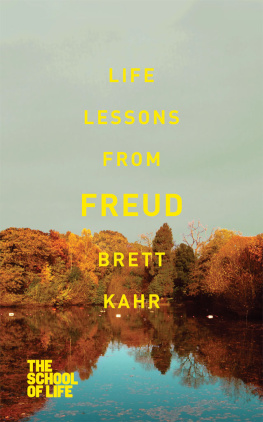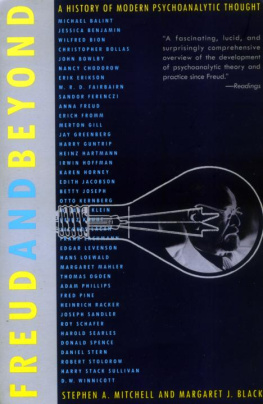On Dangerous Ground
Psychoanalytic Horizons
Psychoanalysis is unique in being at once a theory and a therapy, a method of critical thinking and a form of clinical practice. Now in its second century, this fusion of science and humanism derived from Freud has outlived all predictions of its demise. Psychoanalytic Horizons evokes the idea of a convergence between realms as well as the outer limits of a vision. Books in the series tests disciplinary boundaries and will appeal to scholars and therapists who are passionate not only about the theory of literature, culture, media, and philosophy but also, above all, about the real life of ideas in the world.
Series Editors:
Esther Rashkin, Mari Ruti, and Peter L. Rudnytsky
Advisory Board:
Salman Akhtar, Doris Brothers, Aleksandar Dimitrijevic, Lewis Kirshner, Humphrey Morris, Hilary Neroni, Dany Nobus, Lois Oppenheim, Donna Orange, Peter Redman, Laura Salisbury, Alenka Zupani
Volumes in the Series:
Mourning Freud
Madelon Sprengnether
Does the Internet Have an Unconscious?: Slavoj iek and Digital Culture
Clint Burnham
In the Event of Laughter: Psychoanalysis, Literature and Comedy
Alfie Bown
On Dangerous Ground: Freuds Visual Cultures of the Unconscious
Diane ODonoghue
Born After: Reckoning with the German Past (forthcoming)
Angelika Bammer
The Analysts Desire: Ethics in Theory and Clinical Practice (forthcoming)
Mitchell Wilson
At the Risk of Thinking: An Intellectual Biography of Julia Kristeva (forthcoming)
Alice Jardine
On Dangerous Ground
Freuds Visual Cultures of the Unconscious
Diane ODonoghue

For Charlie
The ideas in this book are indebted to encounters with objects, places, and texts, and the many individuals and institutions that made it possible for me to perceive connections among them.
There are contributors without whom this book would be much diminished, but if it were not for the Boston Psychoanalytic Society and Institute, it certainly would not exist at all. Welcoming me first as a one-year affiliate scholar and extending that tenure to several more years of studying alongside the analytic candidates ultimately resulted in my becoming a scholar member and part of the Institutes faculty, making a book like this possible. That said, this work remains close to my own fieldsart history and archaeologybut does so through an engagement with Freuds early psychoanalytic project that would not have happened without this opportunity to learn, grapple, and critique. To my teachers, fellow students, colleagues, and those I have taught, I owe an inestimable debt. I hope that all of you consider this book an attempted repayment. I am especially appreciative of the support of Sanford Gifford (my first teacher), Bennett Simon, Ayelet Barkai, and particularly Humphrey Morris, who has remained a valued interlocutor and, through his ongoing seminar at Harvards Mahindra Humanities Center, has provided me with a monthly opportunity to discuss readings with a lively, committed group of academics and analysts. Many conversations and texts from these gatherings have helped to shape and sharpen my thinking.
The book begins and concludes on Viennas urban ground, where much of the research, and no small part of the writing, was done, supported by colleagues and friends who showed remarkable generosity and support for intellectual and archival excursions that must at times have at least mildly perplexed them. Many of those acknowledged here are, or were, affiliated with one of three institutionsthe University of Vienna, the Freud Museum, and the Vienna Psychoanalytic Societythat provided me with support and places to present portions of this book as it developed. As readers or as respondents to my questions, those I have met there were invaluable: Sophia Asperger, Karl Bruckschwaiger, Christine Diercks, Michael Diercks, Christian Huber, Joanna King, Andreas Mayer, Maya McKechneay, Edith Saurer, Elisabeth Schlebrgge, Johannes Schlebrgge, Johann Schulein, Hemma Rssler-Schulein, Daniela Seebacher, Hubert Szemethy, Tina Walzer, Sylvia Weinzettl, Gudrun Wlach, and Dieter Zoubek. Arthur and Gila Perach Hirsch were dear friends from the start, and through them, the Moskovics and Zinner families provided me with hospitality and a sustaining sense of home beyond what they could ever realize. Lydia Marinelli, in her capacity as curator of the Freud Museum, offered much practical wisdom during my early days in Vienna, along with a model of scholarship that balanced adventurous inquiry and critical rigor. Her tragic death cut short what certainly would have continued to be a remarkably productive career.
Many have informed my thinking through the provocation of their writing, but here I mention only a very small number cited in this book, those whose work addresses issues especially relevant to my inquiries: Richard Armstrong, Jay Geller, Sander Gilman, Ranjana Khanna, Laura Marcus, and Spyros Papapetros. Mary Bergstein and I have been fellow travelers on paths that converged and diverged in ways very fruitful and important, like our long friendship. I am grateful to Peter Rudnytsky for his valued support of my work and the importance of his own, along with his ability to appreciate my need to keep in mind both the forest and the trees. An excellent series editor, he introduced this project to Bloomsbury where Haaris Navqi and Katherine de Chant guided the book through production with considerable attention and care.
Earlier versions of the chapters here have greatly benefited from both readers and listeners who offered important inquiries that strengthened this text. Organizers and members of the Richardson History of Psychiatry Seminar at Weill Cornell Medical School welcomed me on several occasions to present papers, and I am appreciative of the opportunity to bring new work to this very knowledgeable and engaging group. In a similar way, connections to audiences at the Vienna Psychoanalytic Society, the American Psychoanalytic Association, and the New York Psychoanalytic Society and Institute deepened the clinical implications of this work. Invitations to participate in conferences in visual and cultural studies both in the United States and Europe enriched the transnational scope of this study.
Support that enabled the research and writing of this book is sincerely acknowledged, most especially the Fulbright Scholars Program, which, in awarding me two grants (one as the Fulbright/Sigmund Freud Scholar of Psychoanalysis) enabled the sustained time in Vienna and Central Europe that allowed this work to take its initial shape. The gift of a semester of writing in the Berkshires was afforded through the opportunity to be the Erikson Scholar at the Austen Riggs Center, and additional time in Vienna was made possible by my appointment as the Ortner-Chopin Visiting Professor at Webster University Vienna. Valuable research support was provided by the American Psychoanalytic Association, the Boston Psychoanalytic Society and Institute, and Tufts University. Archives and libraries have played a crucial role in providing the necessary material. Margaret McAleer, senior archives specialist at the Library of Congress, was an extremely knowledgeable and helpful guide to the Sigmund Freud Collection there. And I owe very special thanks to Ingrid Ramirer of the University Library in Vienna, who has been a remarkable resource in finding sources both in her collection and beyond, always welcoming my inquiries as challenges she never seemed unwilling to enthusiastically accept. Jean Turfa, along with Ann Blair Brownlee, made the Etruscan collection in the University of Pennsylvania Museum of Archaeology and Anthropology and its archives available to me, thus allowing an understanding of Freuds early acquisitions that would otherwise have been impossible to reconstruct. Through a kind introduction from Catherine Harding, I met Lucio Riccetti, who both facilitated my work in Orvieto and graciously shared his own scholarship on Freuds experiences there. Moving from Umbria to Tuscany, sincere thanks are due to two colleagues at the University of Siena, Alessandro Leoncini and Giulia Pagni, who allowed me access to archival records and images.
Next page
